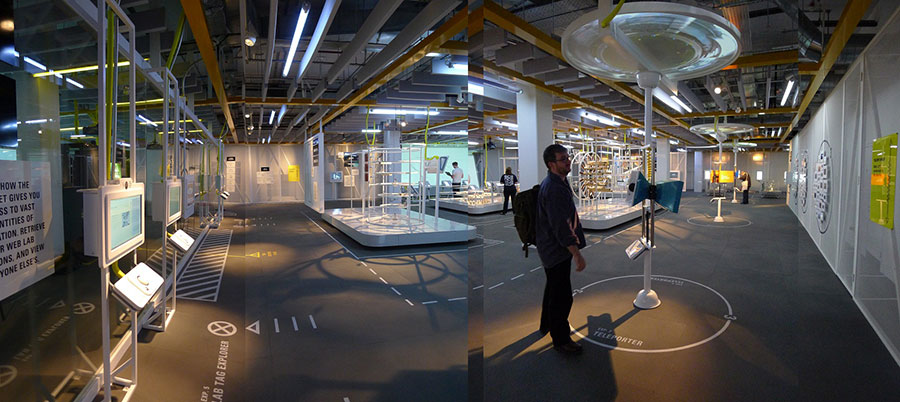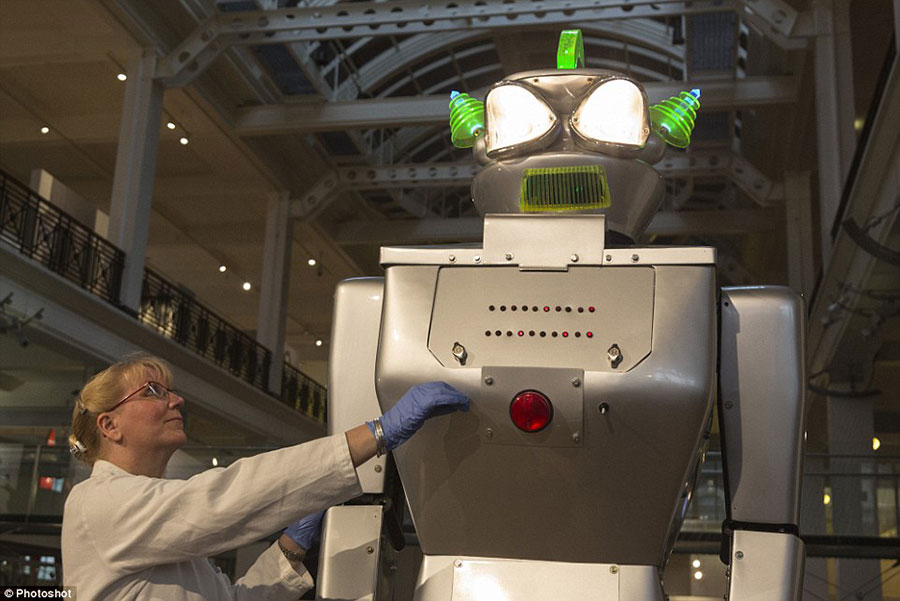London’s Science Museum is exhibiting a collection of more than 100 robots, which opens to the public on Wednesday until September 3rd.
The definition of what exactly is a robot varies widely from one technologist to another. It could include anything from a basic mechanical toy to the most sophisticated of drones, and all of the ones in between. That is why Ben Russell, lead curator of the display, narrowed down the group by choosing only those with humanoid features as the central theme. He justified his decision by saying that we are most fascinated by robots who imitate humans, reported CNET.

The only robot that doesn’t resemble humans is a mechanical silver swan constructed in 1772 that cranes its neck and pretends to swallow a fish while music plays. Mark Twain is reported to have once written about this swan.
The exhibit takes on a journey through robot technology that goes back 500 years. The earliest example of what we might call a robot is a clockwork model of a monk built in the 16th century on behalf of the king of Spain which could supposedly walk, move his lips, raise a crucifix and beat his chest. The robot is still functioning, said the Telegraph.
The exposition then continues through the robotic anthology on to some 20th century radio-controlled mechanical puppets who were used in their majority to attract large crowds to corporate events for their amusement and wonder.
The Science Museum also included the first robot to be capable of moving without assistance: a turtle called Cybernetic Tortoise. It was originally exposed to the public in the 1951 Festival of Britain. The robotic animal responds to light and the presence of other objects while finding its way back to its charging dock completely on its own, reported the Telegraph.
An array of some pretty incredible and whimsical robotic creations can be found in the exhibit. ROSA, for example, was conceived as a hobby by their scientific fathers from a household pasta measuring instrument and now she can fully articulate her ligaments.
As the tour approaches the present days, the robots start getting more and more futuristic to the point where one can get confused about what year it is. Great examples are Robothespian, an artificial actor fluent in 40 languages and the T-800 Endoskeleton robot used in the film Terminator Salvation.
Not all robots were designed just for entertainment purposes. Other had more commendable motives such as Kaspar, who was invented by the University of Hertfordshire to interact with autistic kids and help them develop empathy and learn about communication. Kaspar’s simple facial expressions are much easier for kids with Autism to recognize than the more complex humans.

Kodomoroid is an android that could very well become a caretaker for the elderly in the future, told the Telegraph.
The show’s intent is to raise questions and foster imagination regarding why humans make machines so similar to them; what these robots can say about us; and what we want from robots in practical and philosophical terms.
Mr. Russell admitted to the Business Times that the thought of robots had evoked ambivalent feelings since the beginning.
“One of the advantages of taking a long view of robots as we have done is that you realize a lot of these concerns have been with us for a very, very long time,” Russell said.
They can make some activities easier and faster for people, but it’s not wild to think they could one day potentially remove them from jobs. A report from Reform think tank predicts that over 25,000 british public service jobs could be stolen in the next 15 years by robotic workers.
Going even further, some fear robots could turn against humans and slave them to take over the world. However, robots still have a lot of limitations such as not being able to walk up the stairs or needing to recharge constantly.
Fueling this debate is the fact that robotization is increasingly becoming a part of everyday life. Like one snappy robotic receptionist installed in London University Kings College back in 2002 that gives fashion advice. Steve Cousins, the founder of robotics company Savioke, suggested that twice as many people are going to interact with robots this 2017 in comparison to last year, noted CNET.
The director of the Science Museum, Ian Blatchford, told CNET that the display, which took almost five years to materialize, is going to visit Manchester, Newcastle, and Edinburgh before traveling abroad on a tour that may last at least until 2021. Foreign destinations have not yet been announced.
Although the show does not offer direct interaction with the machines and what they can do, it welcomes adults and children alike; both likely enjoy the display.
Sources: CNET
